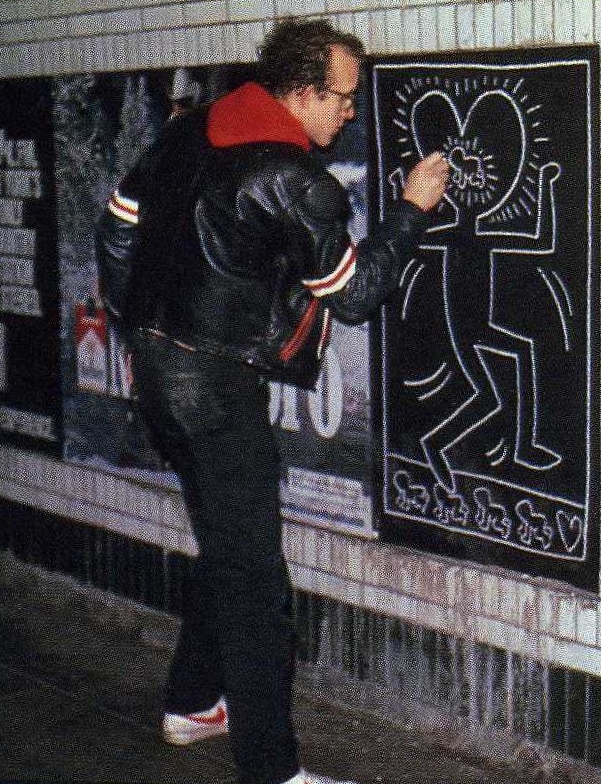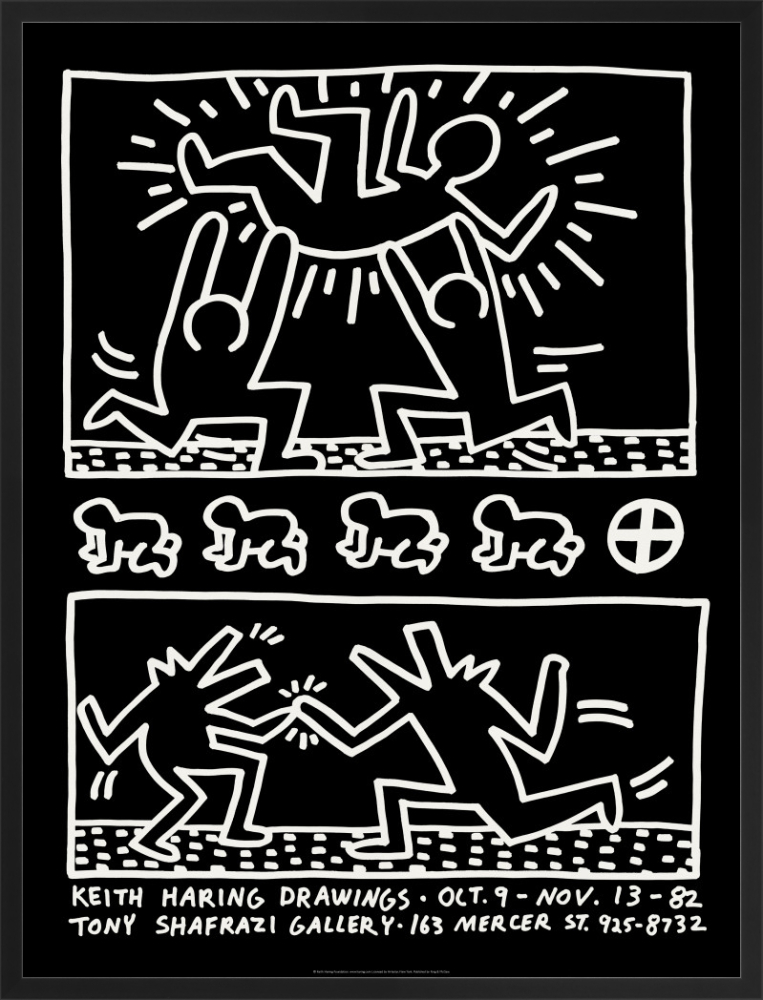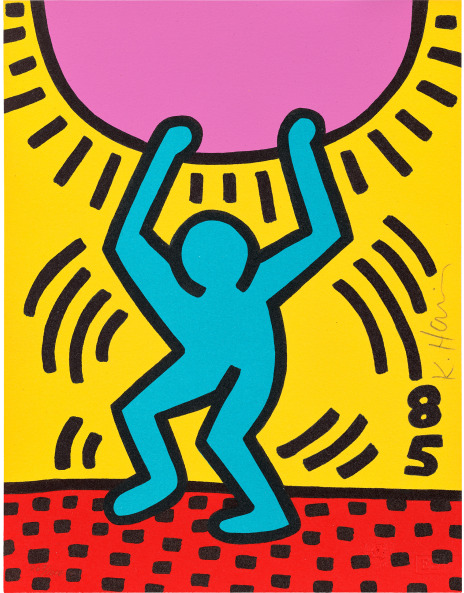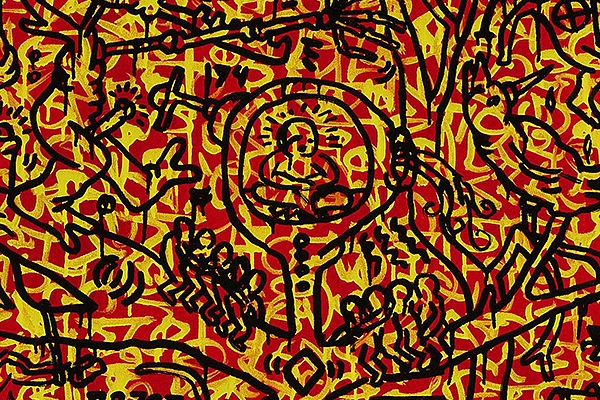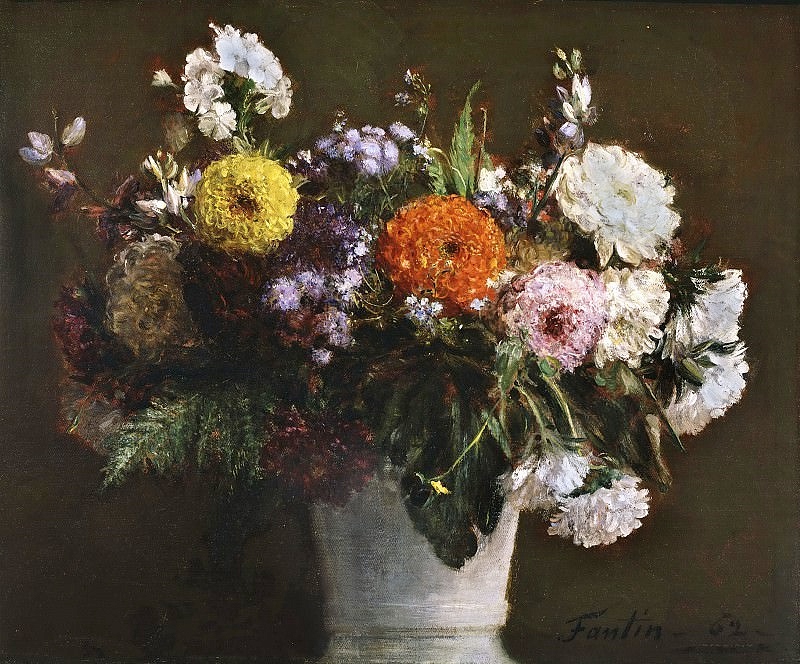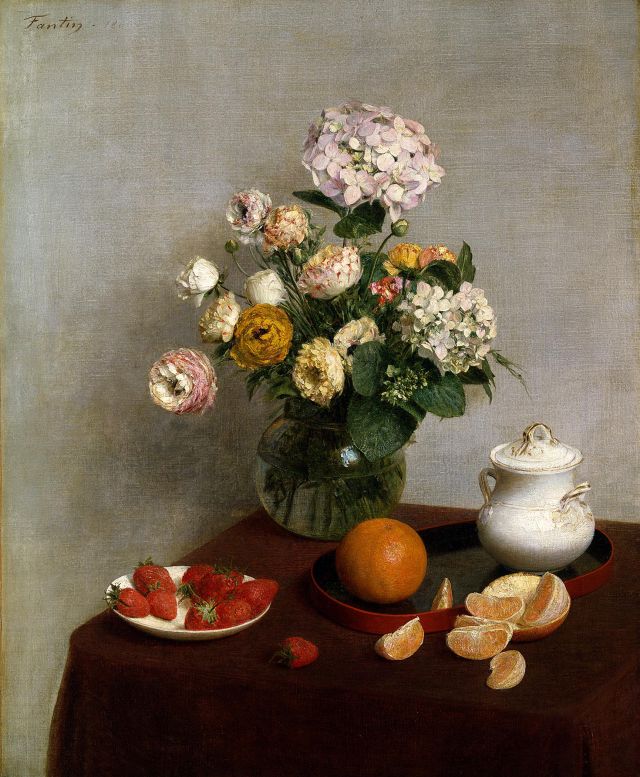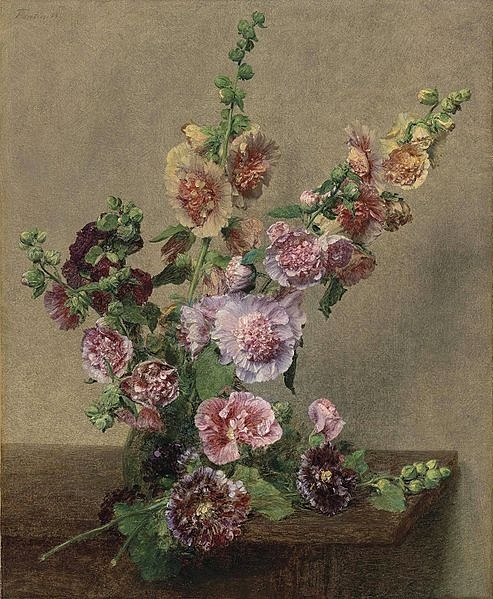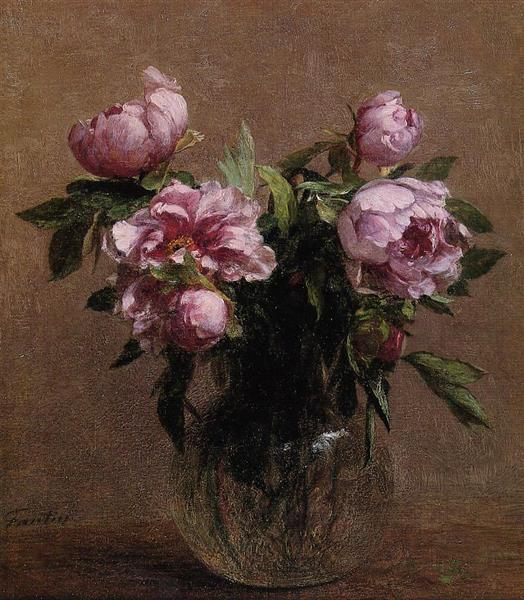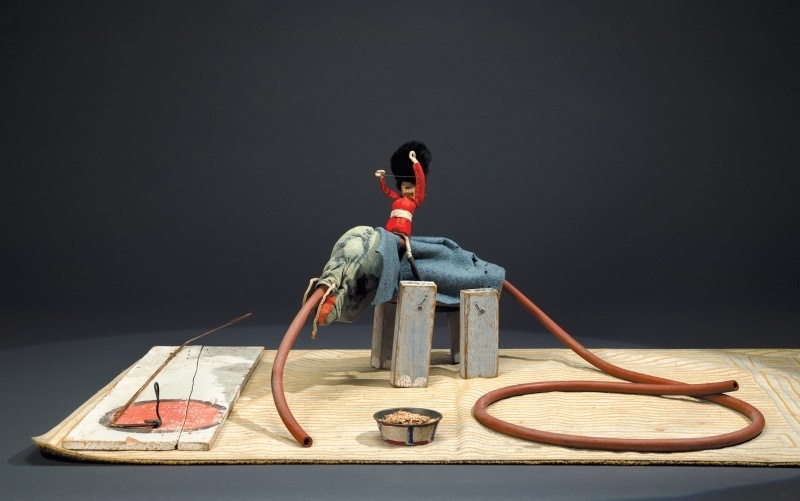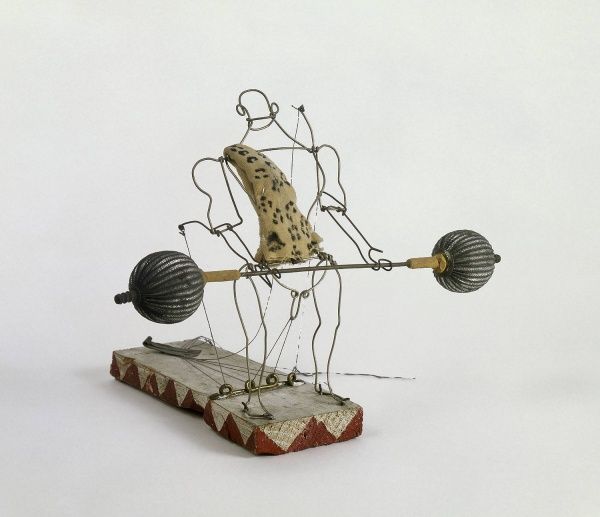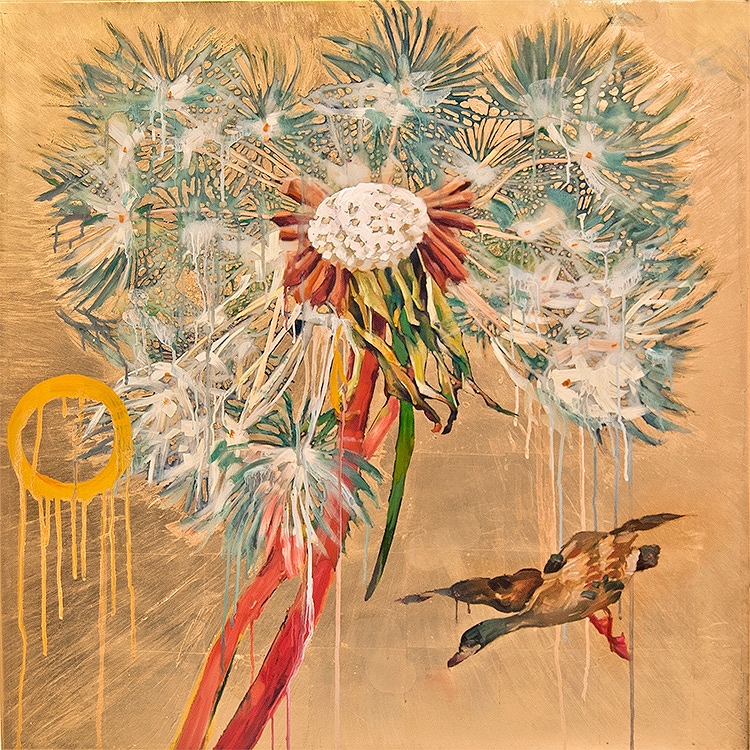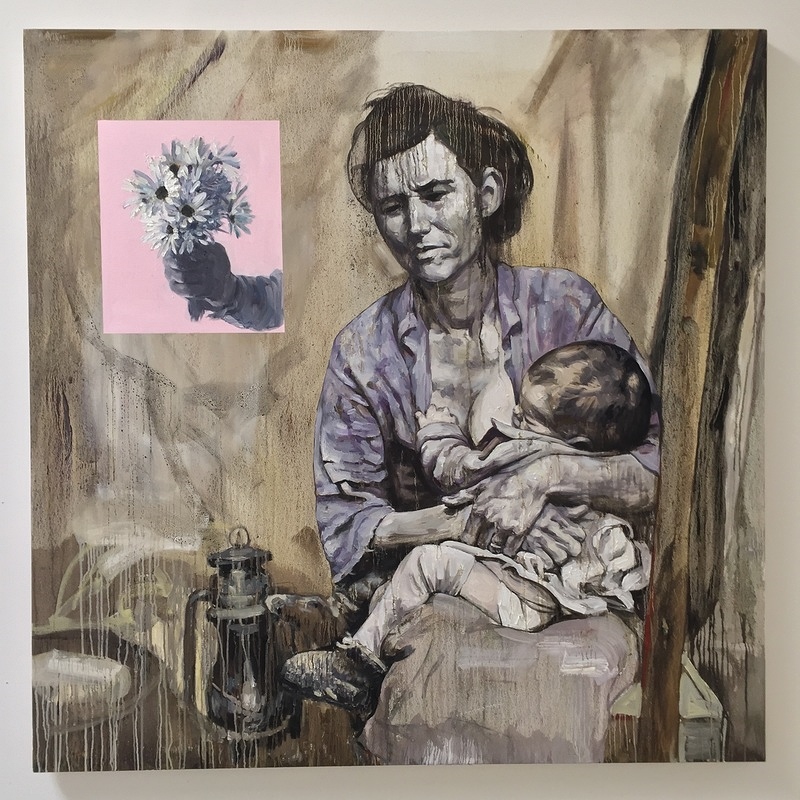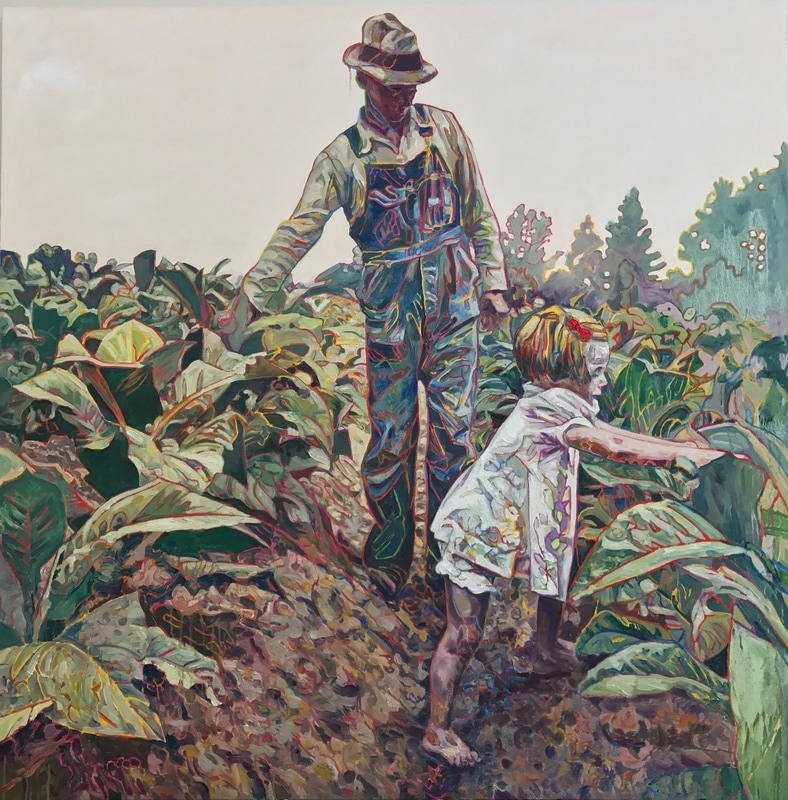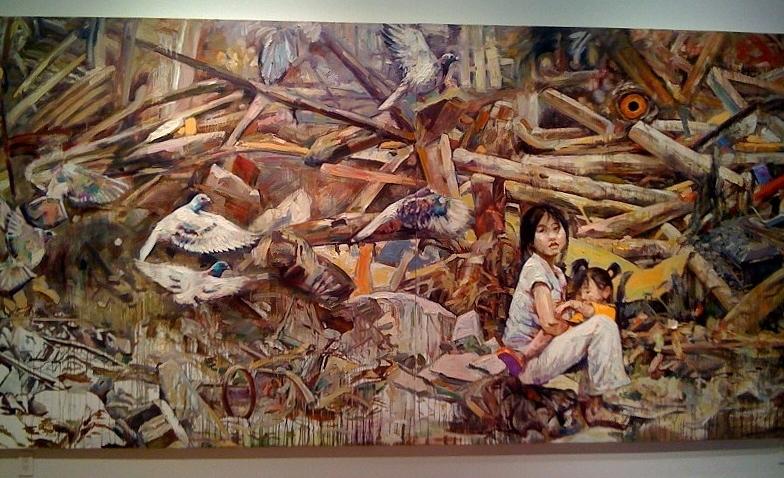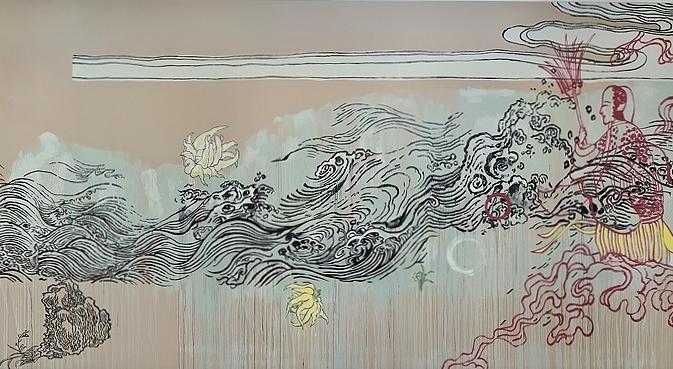If you were born in the month of July, your flower is the larkspur. It is the symbol of positivity, dedication, a beautiful spirit, loving bonds, delight, and joy. The painting “Larkspur” (1888) by Henri Fantin-Latour is unusual in that it is a depiction of a vase entirely of larkspur. Fantin-Latour, a French flower painter, was extremely popular with English Victorian art lovers, who gave a symbolic meaning for every flower. The larkspur was introduced to England from Italy in the mid-1500’s, and it became immediately popular. The flowers bloom on a stalk that is one to three feet tall. Most often the larkspur is used in mixed bouquets to add height. The airy blue-gray foliage is fern-like.
Fantin-Latour has painted the larkspur in three of its four colors. White larkspur represents a happy nature and purity. Purple represents first love, but pink represents a contrary and fickle disposition. As beautifully painted as it was, Fantin-Latour’s bouquet seems to send a conflicting message to a young lady.
The English sprinkled larkspur in the bath as a protection against ghosts, magic, lightning, and to ward off other evils. It was planted around stables in Transylvania to keep witches away. The larkspur’s protective qualities are drawn from various stories and myths. In Greece, after the death of Achilles, the great hero of the Trojan War, his armor was awarded to Ulysses, another hero. Ajax, a third significant hero, was so distressed at not receiving the armor, he committed suicide by throwing himself on his sword. The larkspur flower bloomed where Ajax’s blood dropped onto the ground. In medieval Italy, the larkspur flower first bloomed when three knights slew a fierce dragon, and the flowers sprung up where the knights wiped their bloody swords on the grass. The English name larkspur developed in medieval England. The pointed petals and the pointed center were likened to the claws of the meadowlark, and the spurs of medieval knights. A knight had to “win one’s spurs.” Larkspur, when eaten, is poisonous to humans and animals.
#2 “White Rose and Larkspur No.1” (1927) by Georgia O’Keeffe
Whatever meaning the larkspur or rose may have had in Victorian times, Georgia O’Keeffe was not concerned about its meaning in her paintings. She began a series of large flower paintings in 1927. “White Rose and Larkspur No. 1” (1927) was from a series of five with white roses; two of them with Larkspur.
O’Keeffe’s interest was two-fold: to examine the flower closely and to create different compositions with the same objects. “White Rose and Larkspur No. 1” contrasts dark versus light. The five petals of the flower are pointed and its center can be seen. Using the limited palette of blues and whites, O’Keeffe created a striking image.: “So, I said to myself…I’ll paint what I see—what the flower is to me but I’ll paint it big and they will be surprised into taking time to look at it. I will make even busy New Yorkers take time to see what I see of flowers.” At one time she said she hated flowers, but they were great models as they did not move. Nevertheless, she is well-known for her large and gorgeous paintings of flowers. O’Keeffe said, “When you take a flower in your hand and really look at it, it’s your world for the moment, I want to give that world to someone else.”
“Black Hollyhock, Blue Larkspur” (1930) was painted while O’Keeffe was in Taos, New Mexico, a visit she made every summer from 1929 until her husband Alfred Stieglitz died in 1949. She moved to New Mexico permanently in 1949. O’Keeffe said: “When I was at Mabel’s [Dodge Luhan] at Taos…there was an alfalfa field like a large green saucer. On one side of the field was a path lined with flowers…One day walking down the path I picked a large blackish red hollyhock and some bright dark blue larkspur that immediately went into a painting, and then another painting.”
The blue larkspur is a symbol of dignity and grace. Raised as a Catholic, O’Keeffe may well have known that blue flowers were symbols of the Virgin Mary. In art, Mary always is dressed in blue. O’Keeffe carefully details the five petals of each flower and the pistil in the center. The Bible tells of Christ having received five wounds on the cross. In Christian iconography, the larkspur is a reference to Mary’s tears. An American Pawnee tribe story tells of “Dream Woman,” who cut a hole in the sky so she could look down. Pieces of the blue sky fell to the earth and became larkspur.
If you were born between July 22 and August 21, your Native American totem animal is the salmon. It is the symbol of determination, strength, perseverance, wisdom, prosperity, and renewal. Salmon have been a major food source for Native Americans for thousands of years. The fish is revered and celebrated in rituals. Its symbolic characteristics are related to its observable life cycle. Returning each year to spawn in the same location involves swimming a long distance upstream to return home.
Albert Bierstadt (1830-1902) is most famous for his panoramic landscape paintings of the American west. “Salmon Fishing on the Cascapedia River” depicts two buckskinned fishermen steadying a dugout canoe while a third fisherman casts his line far into the lake. He has caught a salmon; its silvery body arches out of the river as it tries to escape the fisherman’s hook. Bierstadt’s landscape includes the peaceful river, autumn leafed birch trees, a forest beyond the lake, and tall mountains in the distance. The clear air and quiet peace of untouched nature is relaxing and reassuring. The Cascapedia River was and is still known as the home of some of the largest Atlantic Salmon on the Gaspe Bay coast of Quebec, Canada.
April White (b.1972) a Haida artist of the Raven Clan was born in Haida Gwaii, an archipelago off the coast of British Columbia in Canada. Her Haida name is SGaana Jaad (Killer Whale Woman). She earned a BSc in geology from the University of British Columbia and became a field geologist in the North American West. While making maps, she began to paint landscape scenes in watercolor. She is self-taught but has a natural talent. “Realm of the Supernatural” displays her skill with watercolor. The top half of the panoramic waterscape depicts a small forested island set in the calm lake. As the lake flows forward, the water becomes supernatural and a fish, decorated in the “formline” style of Haida art, appears.
In the mid-1980’s, White made painting her vocation. She continued to paint realistic landscapes, but she also created paintings that were “formline” to honor her heritage. Formline is two dimensional, compact, and highly organized art. It consists of flowing lines and striking color. The three standard Haida colors are black, red, and green. The fish shape is well defined with attention to facial features, fins, and flippers. Within the fish or other animal, a face with large eyes is often a prominent part of the design. In this piece, the fish includes the image of a woman’s face, her long black hair swirling upward in simple arches. White said, “Haida women are very prominent in Haida stories and myths—understandable given our matrilineal society. So, it was very important for me to develop a representation of the water realm that reflects not only myself being a woman, but as a Haida.”
White’s “Salmon Tale” (2015) (acrylic) was the winner of the 2015 competition sponsored by the Pacific Salmon Foundation to design the Recreational Fisheries Conservation Stamp. The stamp competition began in 1989, and sportfishermen are required to buy it to support salmon fishing in British Columbia as well as other conservation efforts. Since 1989, $7.75 million have been raised to support more than 2,000 community conservation projects.
White relates the Haida story depicted in “Salmon Tale.” A young daughter of a powerful chief woke up crying from her dream. She saw a shining, leaping fish unlike any known fish. The village Shaman said, “We have many fish in our Inlet, but none like that. Raven, who lives among the Cedars might know.” Raven traveled far, and when he saw a leaping salmon, he caught it. The salmon was the son of the Salmon Chief. Many salmon tried to catch Raven and Salmon, but Raven returned home with Salmon and placed it before the young girl. The Shaman told the people, “Many salmon will try to rescue this young Salmon. You must weave a huge net to catch all the fish.” When the run of salmon arrived, the people caught enough to feed the village, but spared many. The salmon searched the forest streams and decided to spawn in the shallow beneath a Ts’uu-Cedar Tree. The salmon came back year after year and spawned and the humans honored them. The humans developed a ritual for preparing them to eat, and they placed the fish skeletons back into the water, believing that the Spirit of Salmon would rise again each year and regenerate.
The salmon in “Salmon Tale” is depicted in the traditional Haida manner: a profile view, mouth open, a large eye, fin and flippers. Inside the salmon, the Raven’s profile head, open mouth, large eye, and feather patterns of both wings depicts the connection and refers to the tale of how Raven brought Salmon to Humans.
In 2016, the Royal Canadian Mint chose White to design a collection of coins for a collector’s series titled Mythical Realm of the Haida, composed of supernatural figures from the realms of water, earth, and sky. The first is a Haida image of Whale with a female head inside. White’s Haida name SGaana Jaad, Killer Whale Woman, was the inspiration. The second coin features Eagle, with a male dancer cloaked in feathers inside, and the third, Black Bear with a child on its lap. White has also written and illustrated several books.
“From inspiration through to artistic expression…it’s as if I am experiencing innate memories that connect me deeply to my cultural past. It’s as if my brain is really doing the seeing, not my eyes. The feeling of this cerebral vision is supernatural…magical.” (April White)
Beverly Hall Smith was a professor of art history for 40 years. Since retiring with her husband Kurt to Chestertown in 2014, she has taught art history classes at WC-ALL. She is also an artist whose work is sometimes in exhibitions at Chestertown RiverArts and she paints sets for the Garfield Center for the Arts.








































